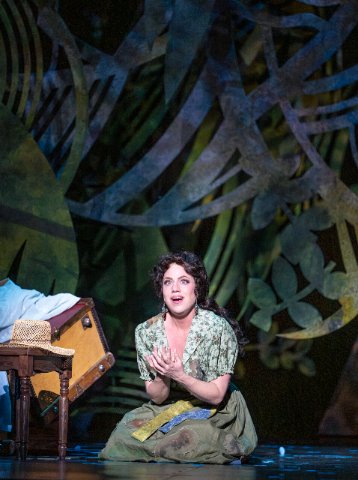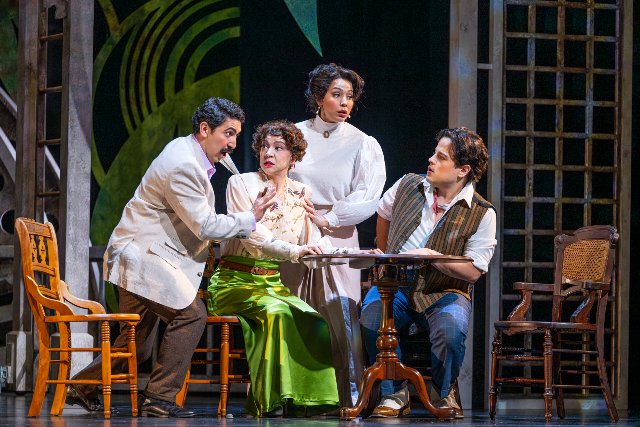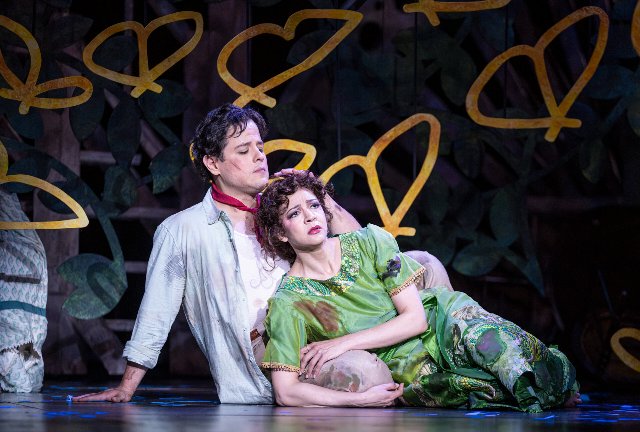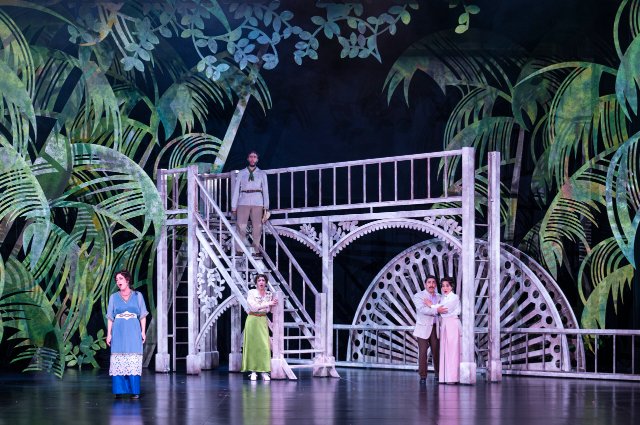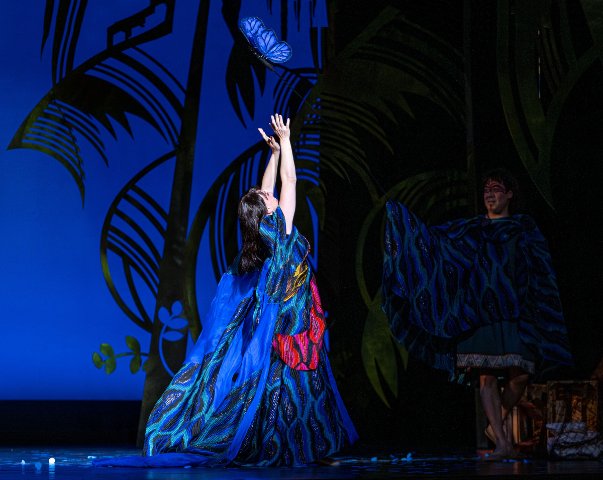Florencia en el Amazonas
Magical Realism Receives Exquisite Treatment By Opera San Jose
By: Victor Cordell - Apr 22, 2024
Mexican Daniel Catán’s 1996 opera has received great attention because of the rarity of Spanish language operas and the number of performance firsts that it has amassed. One can be excused for believing that it is produced because of its lingual uniqueness or because it placates audiences in communities with large Hispanic representation. That would be wrong.
Some critics have been dismissive of the opera simply because it looks backward stylistically rather than adhering to the drab tenets of modern opera convention. The first signal that it stands on its own as a towering work is that each of its three distinguished commissioning opera companies (Houston, Los Angeles, and Seattle) have revived the work - a total of four times. The Met and the Lyric of Chicago have also produced it. Opera San Jose offers a stunning production that raises the question why it took so long for this piece to make it to this stage.
The composer worked with librettist Marcela Fuentes-Berain who developed a straight-forward and accessible narrative that adds richness by merging it with the magical realism of Gabriel Garcia Márquez, under whom she studied. The jungles of the Amazon are a perfect setting for the literary conceit. Fuentes-Berain even integrates cholera into the libretto of this love story, in a nod to her mentor’s masterpiece “Love in the Time of Cholera.” Other trials, large and small, will confront the passengers on their journey.
In opera, music comes first. Unlike most modern operas with musical scores that afficionados are trained to appreciate but rarely really like, “Florencia en el Amazonas” will thrill lovers of 19th century Italian and French opera with its lush romanticism. Its warm tonal music fits the place and time, which is presumed to be late 19th to early 20th century.
Catán especially uses instruments like vibes, timpani, and drums in addition to the usual orchestral instruments for onomatopoeia. Together, they imitate the haunting trills and undulations of the jungle, from birds and insects, as well as the rolling and thumping of thunder and storms. The vocals, particularly the soprano arias and the ensembles sound like they could come straight out of a Puccini opera, especially recalling the soaring of Mimi and the torment of Tosca.
Opera soprano Florencia Grimaldi (interestingly, an Italian surname and the dynastic royal family of Monaco) had deeply loved Cristóbal, a butterfly hunter who disappeared into the Amazon jungle. Twenty years later and with great fanfare, Florencia (portrayed by Elizabeth Caballero) is to return to perform at the Manaus Opera House.
Because of her discomfort with fame and adulation, she travels on a ship from Colombia to the Amazon incognito, where she encounters a journalist, Rosalba (Aléxa Anderson) looking to fill out her notes for a biography of Florencia. A feuding couple Paula (Guadalupe Paz) and Alvaro (Efraín Solís) complete the passenger list.
The Captain (Vartan Gabrielian) loves only sailing as a profession and cannot imagine any other, while his nephew Arcadio (César Delgado) cannot wait to escape the tedium of the river. Arcadio will fall in love with Rosalba, resulting in a third romantic dyad. The final character, a spirit figure who links the real and magical worlds, is the colorful catalytic factotum Riolobo (Ricardo José Rivera).
Although the central character’s name appears in the title, the opera is an ensemble in terms of shared limelight, and the vocal quality of the cast collectively shines. The accomplished Caballero navigates the score’s musical challenges including a wide range with many significant vocal leaps, while displaying a rapid, shimmering tremolo, particularly in Florencia’s wistful paean to her lost love. The little heralded Anderson as Rosalba proves her mettle and more with a bright, crystalline, and penetrating soprano and an ability to hit the leaps in her role part without the hesitation that Caballero sometimes takes. On the male side, Rivera’s powerful baritone as Riolobo fills the house, as does his personality.
The Joseph Marcheso conducted orchestra produces an ideally diverse, warm, and powerful resonance. While the three artists in the previous paragraph are able to compete with the enthusiastic volume of the orchestra, some other performers did not always fare as well on opening night, especially early on.
As beautiful as the arias and the stand-alone orchestral tracks are, the most stunning music is in the many duets and quartets involving many combinations of characters. A quartet of players in a card game trivially disclose their holdings, but each singer shines in brisk, short solos. In subject and style contrasts to the card players, Florencia and Rosalba share a poignant revelatory duet, while in another set piece, Paula and Alvaro reflect on the mistakes that they’ve made in their relationship.
Commentary about Director Crystal Manich’s masterful staging must include compliments to Liliana Duque-Piñeiro’s captivating, impressionistic scenic design that figuratively captures the mystical sense of the environs. Two components dominate. The broadleaf, green jungle that frames the stage looks like it’s pulled from an Henri Rousseau painting. And the sparkling white paddlewheel and stairs that represent the ship appear as if drawn from an American primitive painter’s riverboat study. Tláloc López-Watermann’s often concentrated and diverse lighting, which affects color shading throughout, adds to the drama.
Not only do the music, libretto, and staging excel as individual elements, but the totality exceeds the sum of its parts, capturing the magical realism, most visibly as small butterflies flutter to the stage at the end of Act 1. Fittingly, at the story’s end, one large butterfly offers itself for a lover’s transmigration.
“Florencia en el Amazonas,” composed by Daniel Catán with libretto by Marcela Fuentes-Berain, is produced by Opera San José and plays at California Theatre, 345 South 1st Street, San Jose, CA through May 5, 2024.


